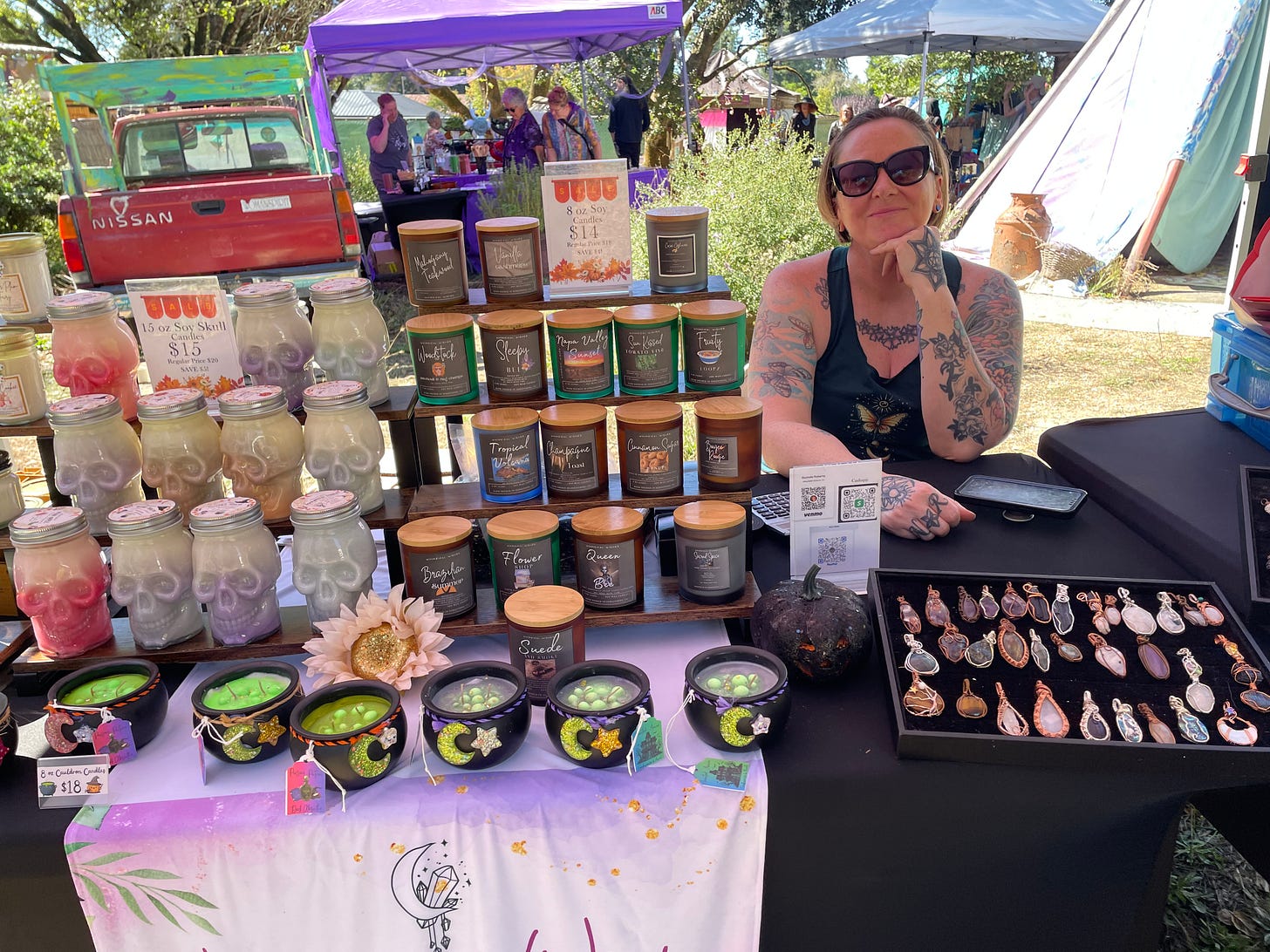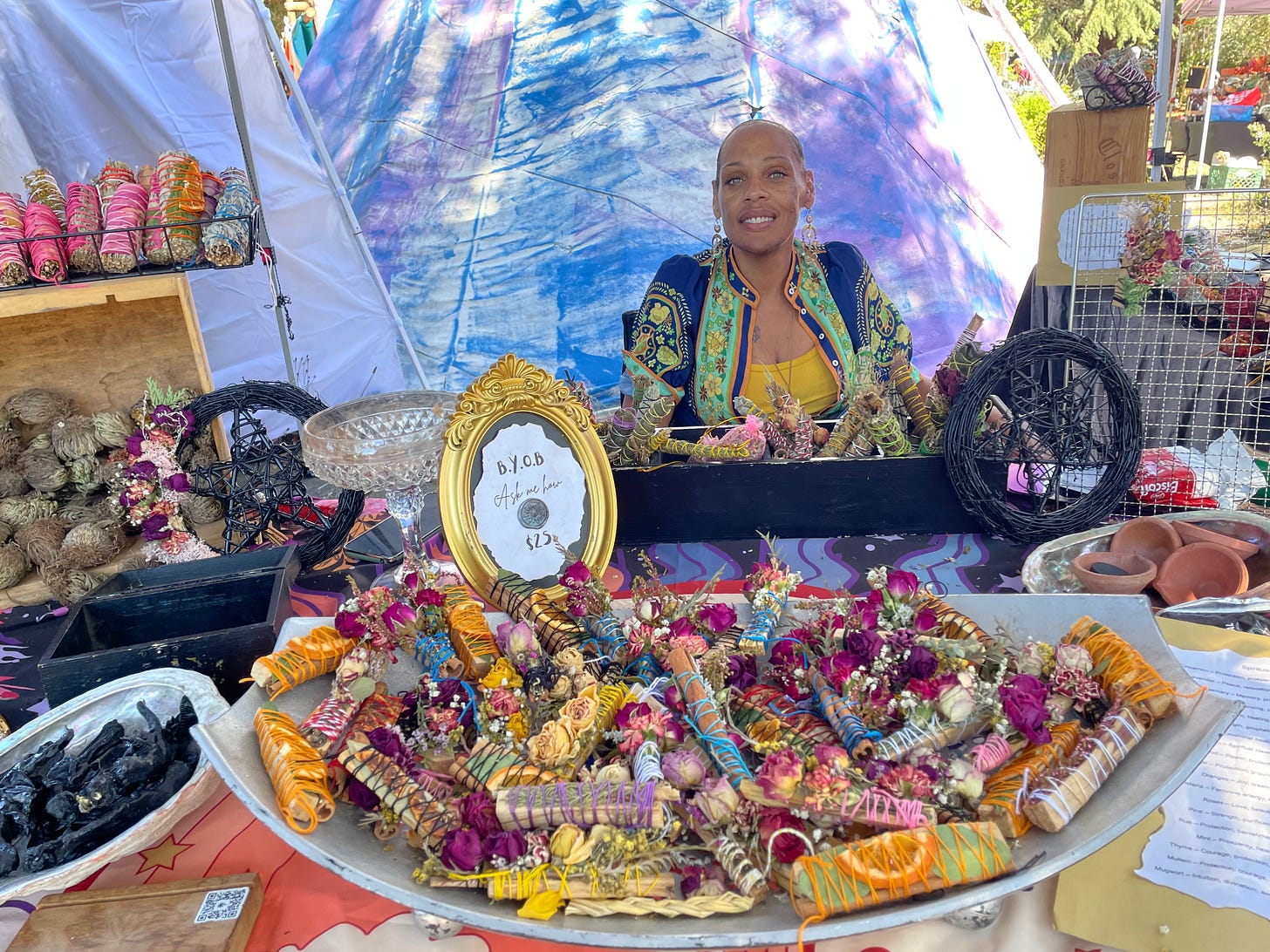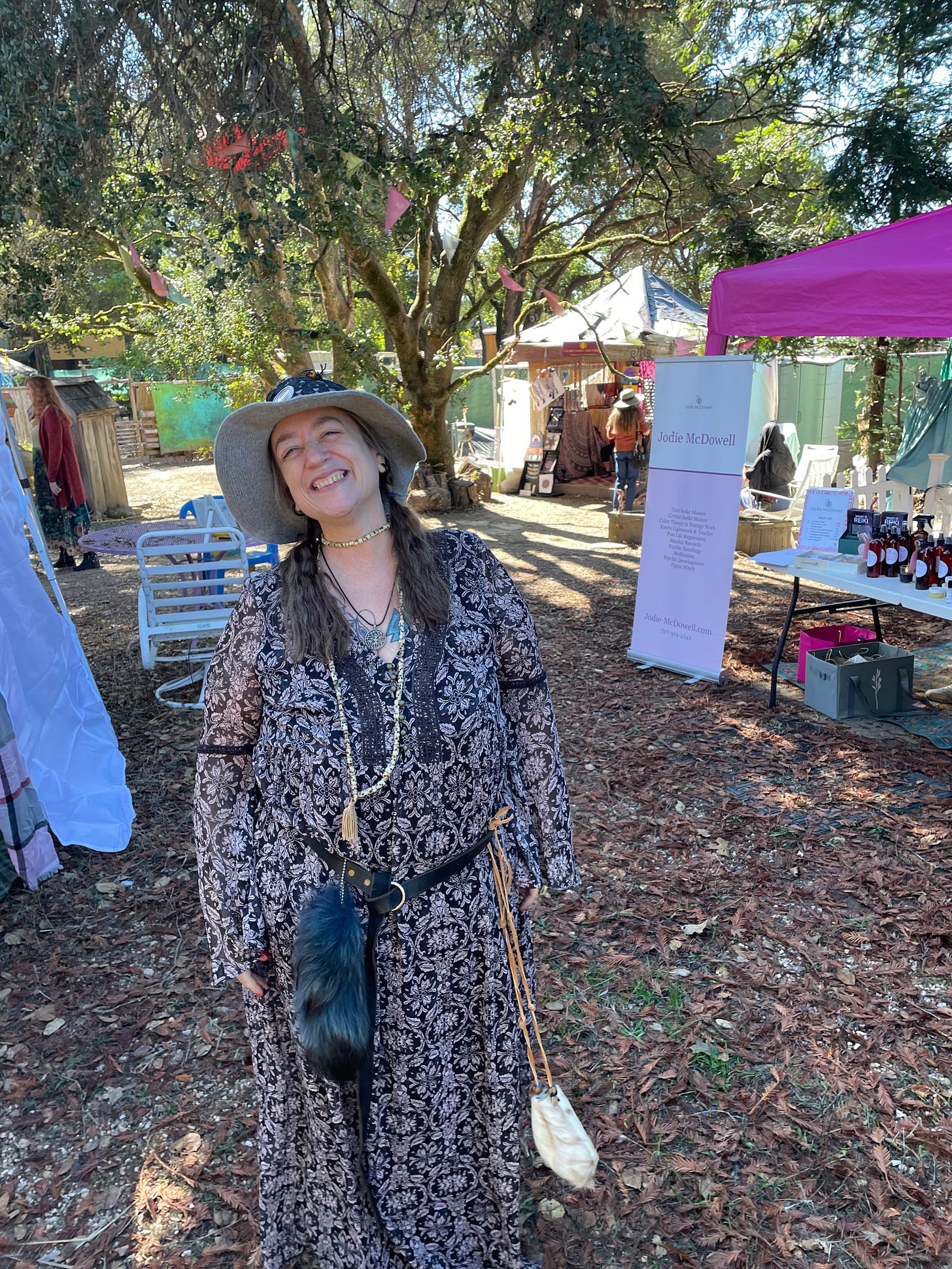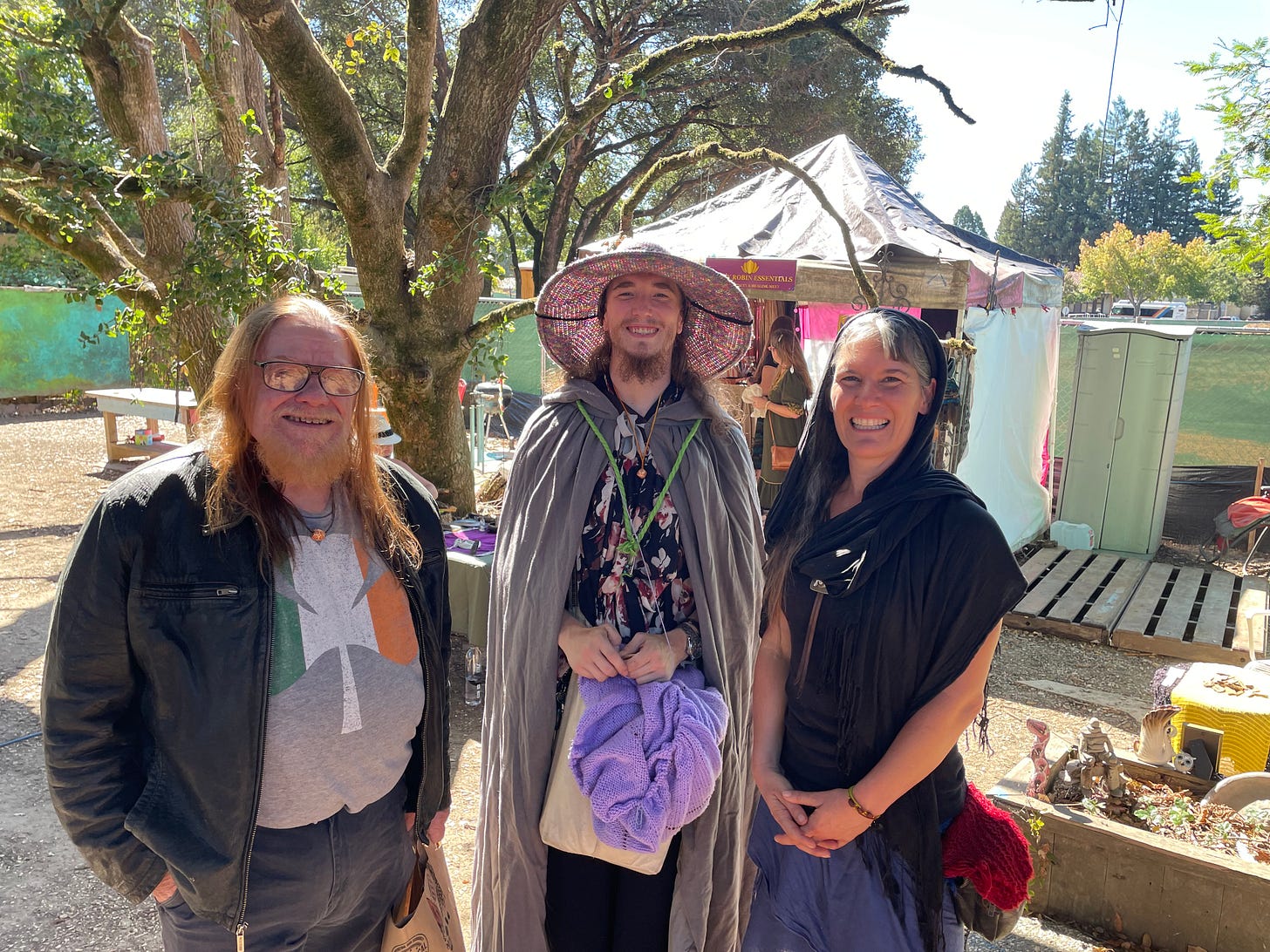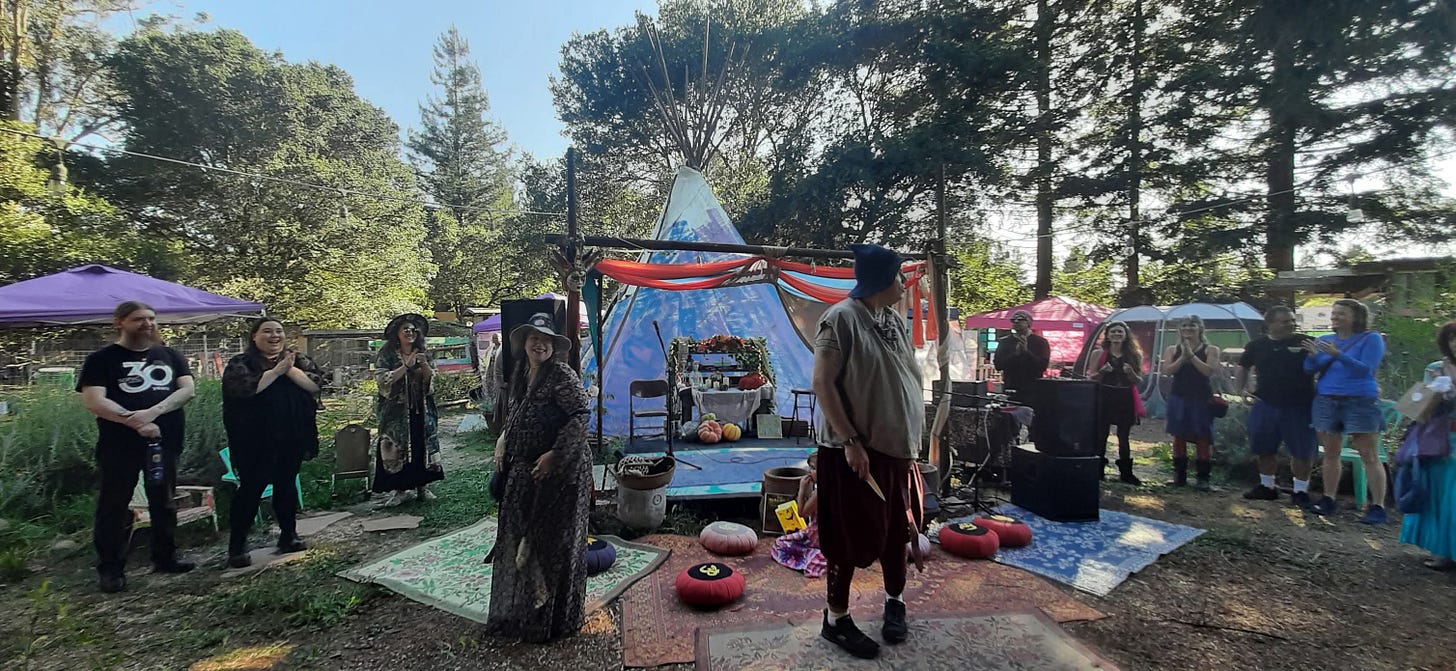West county witches flock to Sonoma County's first PaganFest
Magick on tap at this inaugural Sebastopol event dedicated to all things witchy
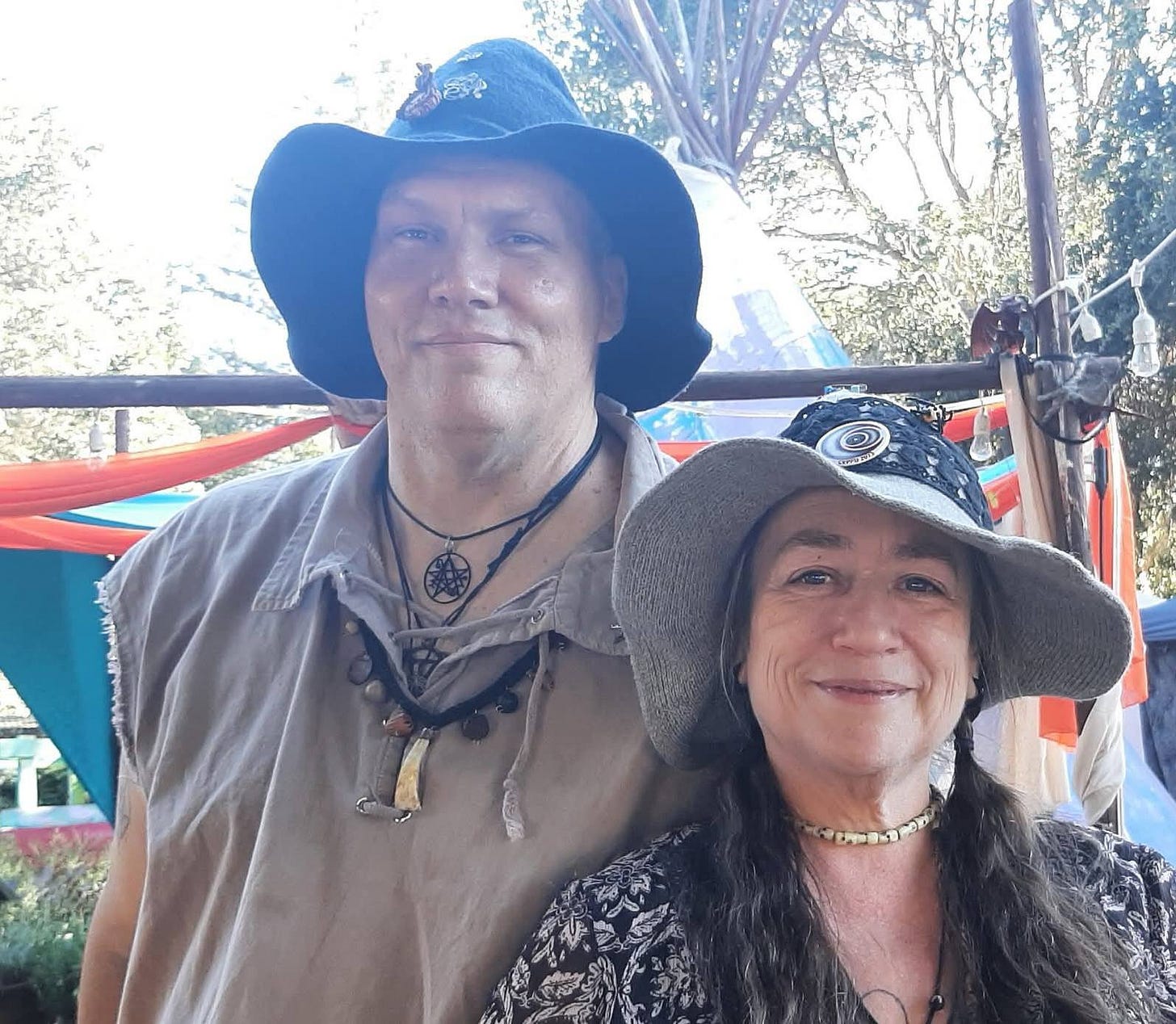
It’s customary in the newspaper biz to find a local witch to profile in October. The Sebastopol Times generally eschews that tradition. (Honestly, editors rarely think, “It’s December. Let’s interview a Christian!”) But since the inaugural Sonoma County PaganFest happened this weekend in Sebastopol, we couldn’t resist covering it.
SoCo PaganFest, which was produced by Math and Melissa Reed and the Misty Moons Coven, happened at Miss Daisy’s Magical Wonderland on Saturday, Oct. 4. It wasn’t as crowded as the other festival happening in town that day—the pan-Asian Many Moons Festival—but it was an endearing, handmade affair, with vendors peddling magick candles, oils, herb bundles, and Reiki-infused paintings. There were tarot readers, psychic readers and alternative healers of all sorts.
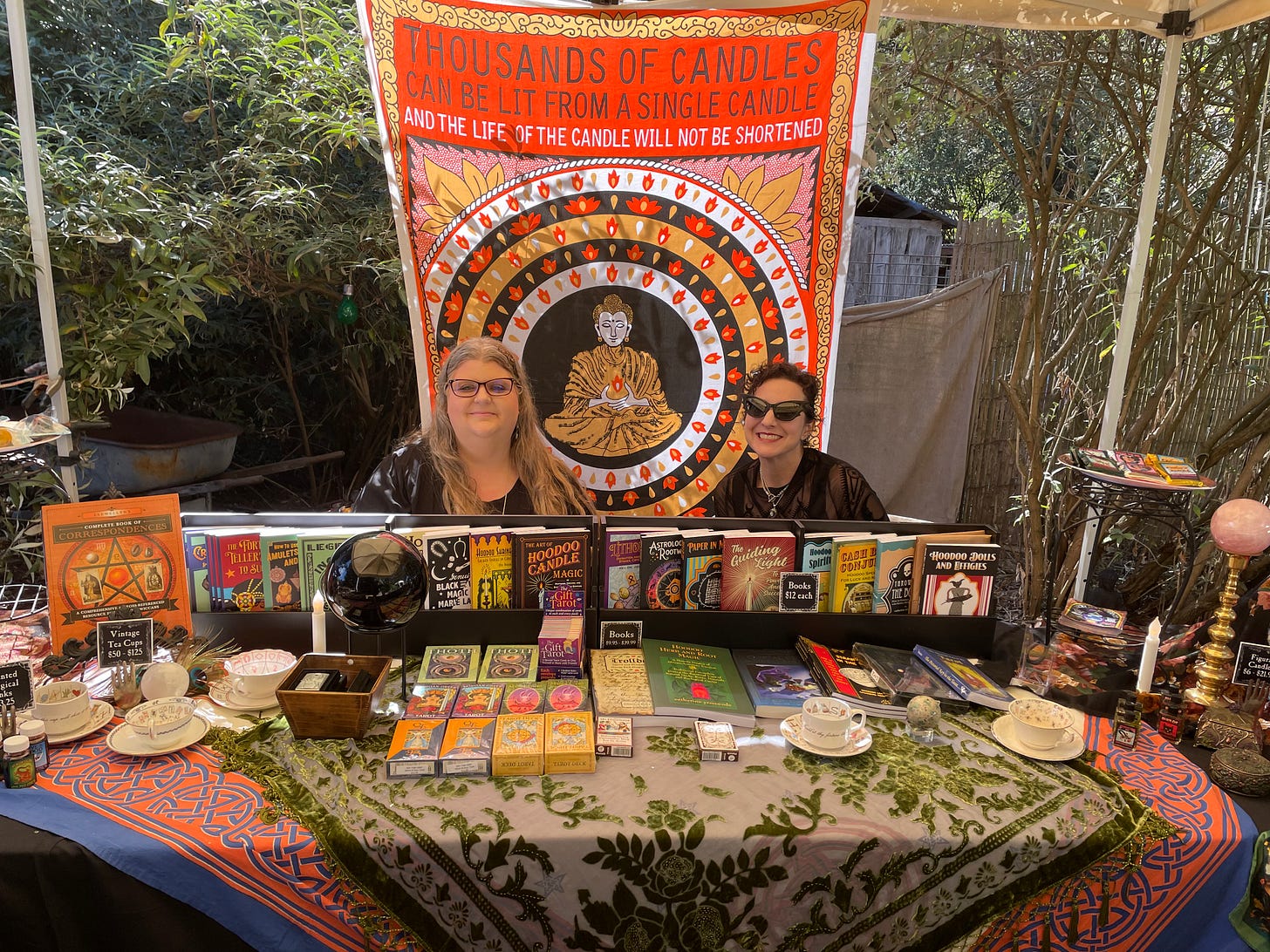
The festival started with a ceremony dedicated to the goddess Fortuna. Throughout the day, it featured music from Heather Star, Kim Atkinson, and Tami Gosnell and talks by well-known witches, like writer Diana Paxson and Milk & Honey’s Phoenix LaFae, who gave a rousing talk on “Being a Spiritual Rebel.”
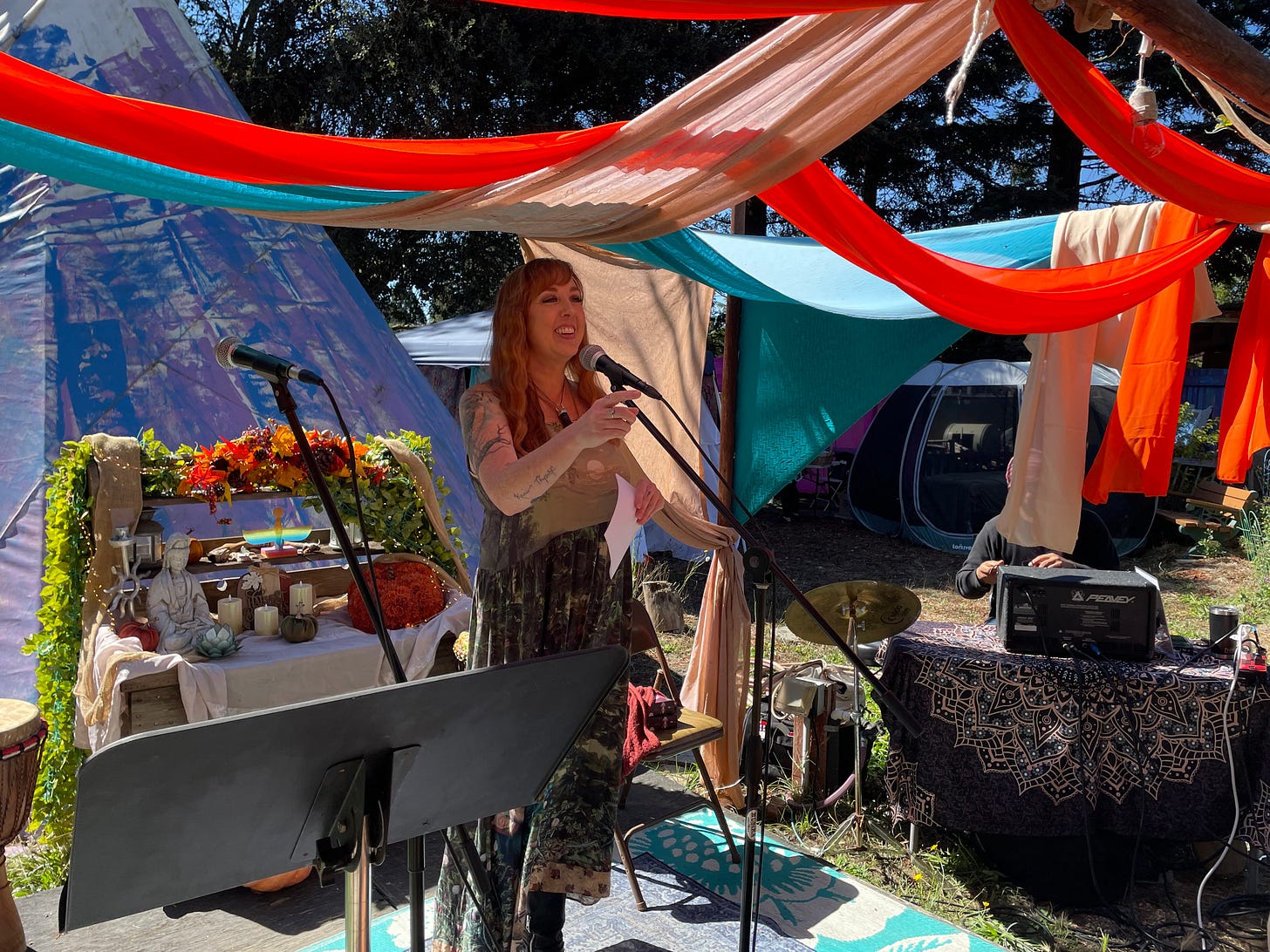
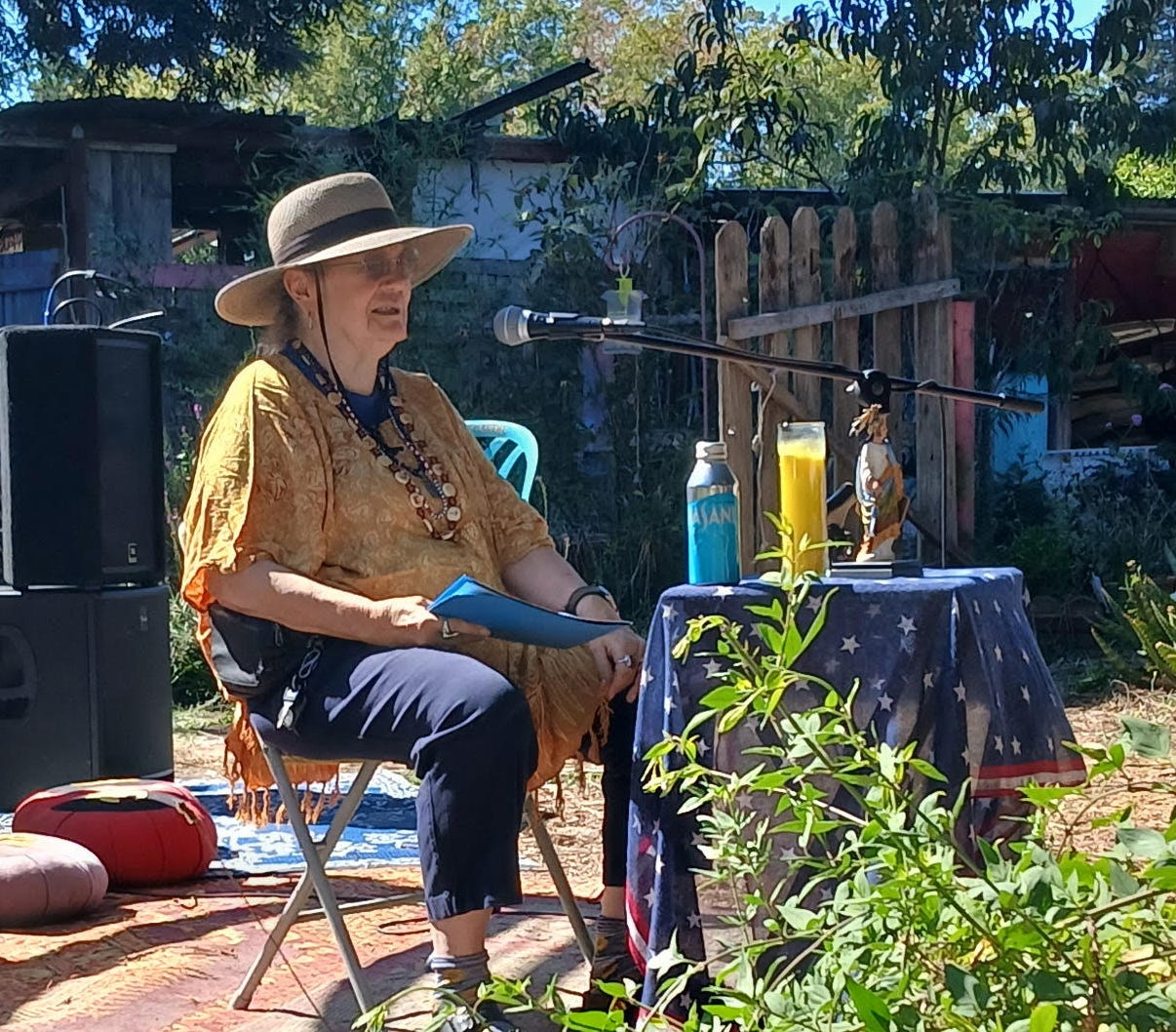
Melissa Reed, one of the producers of the event, grew up in West County, but her family moved to the Central Valley after she finished 8th Grade. For several years, before COVID hit, Melissa and her partner, Matthew, produced the Pagan Pride festival in Fresno, which regularly drew several hundred people. Three years ago, when they returned to Sonoma County (a seemingly more pagan-friendly place), Melissa was surprised to learn that there wasn’t a county-wide pagan fair here.
So they decided to throw one.
Admission to PaganFest was free with the donation of an item for the food drive. The food they collected was donated to Third Street House in Guerneville.
“PaganFest is a give-back event,” Reed said, “The whole thing is to give back. We who are hosting it do not get any funds out of it. In fact, we’re putting money into it.”
Reed said about 200 people attended the event.
At PaganFest, participants’ attire ranged from street clothes to witchy goth to Renn Faire to floaty New Age silks to fairytale witch (pointy hats and all).
What is a witch?
In case the word “witch” is throwing you off, witches/wiccans/pagans are often, though not always, goddess-loving nature worshippers (or nature-loving goddess worshippers), who celebrate a cycle of seasonal holidays known as the Wheel of the Year. Some worship a god/goddess duo, and some call on a variety of other gods and spirits. Traditionally, many of these hearken back to the pagan gods of pre-Christian Europe, but many witches and pagans these days draw their deities from more global pantheons.
Reed finds these definitions constricting. “Our goal is not to define other’s interpretations of those terms. Witchcraft holds no boundaries within religion,” she said. “There are Wiccan witches, Christian Witches and Jewish witches.”
In her talk, LeFae mentioned a reverence for nature and the practice of magick—the “k” is meant to differentiate it from stage magic—as common denominators among witches.
LaFae discussed the recent evolution in the understanding of what a witch is. When she first got into witchcraft as a teenager, she thrilled to its edgy vibe of dark danger—a middle-finger thrown up to the conventional world. Then over the years, there was an effort to soften that image (see the seasonal, goddess-loving nature-worshipers described above). People started calling themselves Wiccans (derived from old Anglo Saxon) rather than witches. Then that was softened to the broader term Pagans, a term first used in the fourth century by early Christians for people in the Roman Empire who still practiced the old polytheistic religions. Now, that LaFae has been practicing witchcraft for almost 30 years, she said she has reclaimed the word “witch,” with all its power and aura of danger.
Here’s a brief portion of her talk that gives a good sense of what being a witch is like:
I teach this intro to witchcraft class, and I often describe that feeling where you’re playing in the mud, or you’re picking herbs, or you’re naked under the full moon, and you’re like, ‘Oh my God, I feel like I’m doing something, right?’ Like we’ve all—if you’ve had any witchcraft experience, any pagan experience—you’ve had that feeling where the hair on the back of your neck stands up. You said that invocation to Hecate [Greek goddess of witchcraft and the night], and you know she’s in the fucking room…We should be sharing those experiences. We should be feeling those feelings. There is something happening when we get that juice, it’s magick. That is magick, right? Doreen Valiente said, “Magick is the art of changing consciousness at will.” That is freaking magic. And we need more of that. The world needs more of that.
LaFae said a witch needs three things: self-knowledge, discernment and bravery. All are vital but in this particular political moment, she said the third is particularly important:
We need more of those brave moments where we step up. We need more of those brave moments where we say no, we need more of those moments where we see oppression happening in the world and we do something about it, whether that’s with our bodies or our words or our magic—because that is the thing that witches have that other activists may not be utilizing—our magic. We can be heretics and we can be spiritual rebels and support those marching, support those protesting, support those on the streets, support those doing the hard work.
She urged her listeners to be “the tall poppy”—the one who stands up and stands out, despite the dangers. She knows this is scary.
We’ve been told over and over and over again for centuries that you [women] have no power. You belong to another human. If you do try to stand up or stand out, you’ll be ostracized. You’ll be the old lady living in the hut at the edge of the woods. Sounds great to me, but not all of us. (Get me the Baba Yaga hut, and I’ll be great.) But we carry this fear within us, and that is the fear we have to fight against.
Because it’s not just fear of someone seeing our pentacle necklace. It’s not just fear of our family not being accepted. It’s not just fear of someone at our office being like, ‘Huh? I’m not so sure about that.’ These are legitimate fears, but the fear for many of us is ingrained in our freaking DNA. It is a wound we carry, and so we have to work through that fear and work through those wounds.
And the only solution to that is community. The only solution to that is events like this. The only solution to that is looking around this space and being like, “All these fucking people get it. I’m not alone. I’m not the one weirdo. I’m not the only person on the planet who has these crazy thoughts like ‘We should take care of trees.’’’ Look at all these faces. It bolsters us, it gives us bravery, so that we can be brave.
Not all witches are political, of course, or even left of center, but this being Sebastopol, you would be forgiven for thinking that. In general, though, the vibe of PaganFest was more spiritual than political. It was fun, deeply alternative and somehow so Sebastopol.
The next witchy event is the Psychic Fair, Saturday, Oct. 11, starting at noon, at Milk and Honey, 123 N. Main St., Sebastopol. Melissa Reed said her coven, the Misty Moons, will be hosting another festival, called FairyFest, in the spring. You can find her on the Misty Moons Facebook page. You can also email her at Bethybee71@gmail.com.


